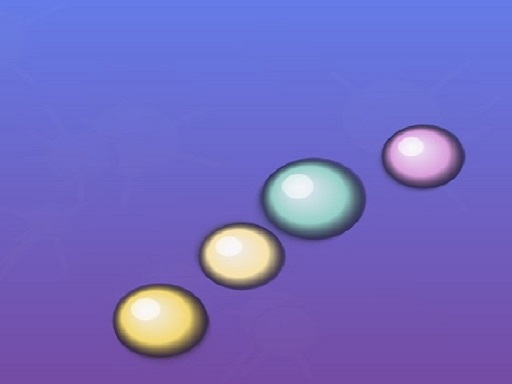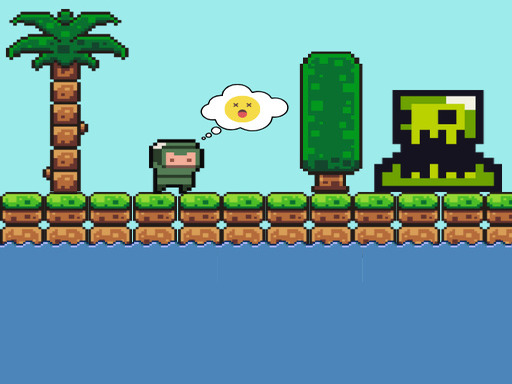Up & Smash
About Up & Smash
Okay, so listen, you know how sometimes you stumble across a game, almost by accident, and it just… clicks? Like, you weren’t even looking for anything specific, just idly scrolling, and then *bam* – suddenly your entire evening is gone, swallowed whole by this little digital world that just captured your full attention? That’s exactly what happened to me with this game called *Up & Smash*. Honestly, I’m still a little buzzed from it, and I just had to tell you about it because I think you’re going to absolutely love it.
I mean, on the surface, it sounds almost deceptively simple, right? You’re controlling an elevator, trying to get it to the bottom of a shaft, avoiding all these crazy obstacles. That’s the elevator pitch, if you’ll pardon the pun. But what’s fascinating is how that simple premise blossoms into this incredibly engaging, almost meditative experience. I’ve always been drawn to games that take a straightforward concept and then just layer on complexity and challenge in such a brilliant way that you don’t even realize how deep you’re getting until you’re utterly hooked. And *Up & Smash* nails that feeling.
When I first fired it up, I was expecting something pretty basic, you know? Tap left, tap right, maybe a button to go up or down. But the brilliant thing about this is the *feel* of the control. It’s not just about moving an elevator; it’s about managing its *descent*. You’re constantly fighting gravity, essentially. The elevator wants to fall, and your job is to subtly, precisely, and often frantically, stop it from plummeting into oblivion. It’s less about pressing a button to go down and more about a delicate dance of *resistance*. You’re constantly making micro-adjustments, nudging it up just enough to slow its fall, then letting it drop a little, then catching it again. It’s this incredibly satisfying push-and-pull dynamic that gets its hooks into you immediately. You can almost feel the weight of the elevator, the inertia of it, as you guide it down.
The visual style, too, is just perfect for a hypercasual game. It’s clean, vibrant, and incredibly clear. You can always tell what’s an obstacle and what’s safe space, which is crucial when things start moving at a blistering pace. And trust me, they *do* start moving. The first few levels are a gentle introduction, a chance to get a feel for the controls, to understand the rhythm of the descent. You’re easing your way down, maybe dodging a couple of static blocks. You feel like a master, a true elevator whisperer. You think, "Okay, I got this. This is chill."
Then, just when you’re comfortable, the game throws a curveball. What’s interesting is how it introduces new obstacles. It’s not just about different shapes; it’s about different *behaviors*. Suddenly, you’ve got these moving platforms, some sliding horizontally, others vertically, creating these tiny, fleeting windows of opportunity. And the challenge isn’t just about seeing the gap; it’s about timing your elevator’s controlled fall to *thread that needle*. You have to anticipate where the opening will be, adjust your descent rate to match, and then commit. The tension in those moments is palpable. Your shoulders start to tense, your eyes narrow, and you find yourself leaning into your phone, as if that extra bit of body English will help you squeeze through.
The sound design, too, is subtle but effective. You hear the gentle hum of the elevator, the soft *clink* of metal as it brushes past a safe wall, and then the stark, almost jarring *thud* when you misjudge and hit an obstacle. That *thud* is a cruel teacher, let me tell you. It’s not overly punishing, just a quick reset, but it’s enough to make you grit your teeth and immediately dive back in for another attempt. There’s something magical about games that can convey so much with so little, where every sound, every visual cue, is perfectly calibrated to enhance the gameplay loop.
What I love about games like this is that they manage to be incredibly challenging without ever feeling unfair. When you fail, it’s always because *you* made a mistake, not because the game cheated you. That’s a huge distinction, especially in hypercasual titles where frustration can quickly lead to abandonment. Here, every failure is a lesson. You learn the patterns, you refine your timing, you develop a sort of muscle memory for the elevator’s delicate movements. And then, when a strategy finally clicks into place, when you manage to navigate a particularly treacherous gauntlet of moving blades and shifting walls, that feeling of satisfaction? Oh man, it’s pure dopamine. It’s that moment when you exhale a breath you didn’t even realize you were holding, and a genuine smile spreads across your face.
You’ll find yourself entering this almost trance-like state. It starts with conscious thought: "Okay, I need to go left here, then quickly right, then slow down for that vertical platform." But after a while, it becomes instinct. Your fingers are moving almost independently, reacting to the visual cues before your conscious mind even registers them. It’s like a rhythm game, but instead of hitting notes, you’re orchestrating a perilous descent. The real magic happens when you hit that flow state, where you’re just reacting, gliding, barely thinking, and you’re just *doing*. That’s when you lose track of time. You look up and realize an hour has passed, and you’re just thinking, "Okay, just one more level. I can beat this one."
And the levels! They’re not just randomly generated. Each one feels handcrafted, a new puzzle to solve, a new set of challenges to overcome. Some levels introduce environmental hazards, like sections where the walls narrow drastically, forcing even finer control. Others might have obstacles that move in unpredictable patterns, demanding quick improvisation. The variety keeps things fresh, ensuring that you’re always learning, always adapting. It never feels repetitive, even though the core mechanic remains the same. It’s like the game is constantly whispering, "You think you’re good? Try *this*." And you, being the gamer you are, just can’t resist that challenge.
In my experience, the best moments come when you’re faced with a seemingly impossible gauntlet. You try it, you fail, you try again, you fail faster. You start to get frustrated, maybe even curse under your breath a little. But then, you take a deep breath, you visualize the path, you commit. And you nail it. You weave through the chaos, the elevator barely scraping by, and you reach the bottom of the shaft with a triumphant flourish. That feeling of overcoming something that seemed insurmountable just moments before? That’s what we play games for, isn’t it? That surge of accomplishment, the proof that your reflexes, your timing, your focus, were all perfectly aligned.
What’s interesting is how *Up & Smash* manages to be both incredibly intense and surprisingly relaxing at the same time. When you’re in the thick of a difficult level, your heart rate definitely increases, you feel that adrenaline rush. But then, after you clear it, there’s this immediate release, this sense of calm and satisfaction. It’s a perfect little burst of gaming joy, ideal for those moments when you have a few minutes to kill, but also deep enough to pull you in for an extended session. It’s the kind of game that reminds you why simple mechanics, executed flawlessly, can be so much more captivating than overly complex systems.
Honestly, if you’re looking for something new, something that’s going to challenge your reflexes, sharpen your focus, and give you that pure, unadulterated gaming satisfaction, you absolutely have to check out *Up & Smash*. Don’t let the hypercasual label fool you; there’s a genuine depth and a wonderfully addictive quality to it. It’s not just a game; it’s a masterclass in controlled chaos, a delightful dance with gravity, and a testament to how brilliant game design can be. Just wait until you experience that moment when you perfectly thread the needle through a flurry of obstacles. You’ll know exactly what I’m talking about. Seriously, go download it. You won’t regret it.
I mean, on the surface, it sounds almost deceptively simple, right? You’re controlling an elevator, trying to get it to the bottom of a shaft, avoiding all these crazy obstacles. That’s the elevator pitch, if you’ll pardon the pun. But what’s fascinating is how that simple premise blossoms into this incredibly engaging, almost meditative experience. I’ve always been drawn to games that take a straightforward concept and then just layer on complexity and challenge in such a brilliant way that you don’t even realize how deep you’re getting until you’re utterly hooked. And *Up & Smash* nails that feeling.
When I first fired it up, I was expecting something pretty basic, you know? Tap left, tap right, maybe a button to go up or down. But the brilliant thing about this is the *feel* of the control. It’s not just about moving an elevator; it’s about managing its *descent*. You’re constantly fighting gravity, essentially. The elevator wants to fall, and your job is to subtly, precisely, and often frantically, stop it from plummeting into oblivion. It’s less about pressing a button to go down and more about a delicate dance of *resistance*. You’re constantly making micro-adjustments, nudging it up just enough to slow its fall, then letting it drop a little, then catching it again. It’s this incredibly satisfying push-and-pull dynamic that gets its hooks into you immediately. You can almost feel the weight of the elevator, the inertia of it, as you guide it down.
The visual style, too, is just perfect for a hypercasual game. It’s clean, vibrant, and incredibly clear. You can always tell what’s an obstacle and what’s safe space, which is crucial when things start moving at a blistering pace. And trust me, they *do* start moving. The first few levels are a gentle introduction, a chance to get a feel for the controls, to understand the rhythm of the descent. You’re easing your way down, maybe dodging a couple of static blocks. You feel like a master, a true elevator whisperer. You think, "Okay, I got this. This is chill."
Then, just when you’re comfortable, the game throws a curveball. What’s interesting is how it introduces new obstacles. It’s not just about different shapes; it’s about different *behaviors*. Suddenly, you’ve got these moving platforms, some sliding horizontally, others vertically, creating these tiny, fleeting windows of opportunity. And the challenge isn’t just about seeing the gap; it’s about timing your elevator’s controlled fall to *thread that needle*. You have to anticipate where the opening will be, adjust your descent rate to match, and then commit. The tension in those moments is palpable. Your shoulders start to tense, your eyes narrow, and you find yourself leaning into your phone, as if that extra bit of body English will help you squeeze through.
The sound design, too, is subtle but effective. You hear the gentle hum of the elevator, the soft *clink* of metal as it brushes past a safe wall, and then the stark, almost jarring *thud* when you misjudge and hit an obstacle. That *thud* is a cruel teacher, let me tell you. It’s not overly punishing, just a quick reset, but it’s enough to make you grit your teeth and immediately dive back in for another attempt. There’s something magical about games that can convey so much with so little, where every sound, every visual cue, is perfectly calibrated to enhance the gameplay loop.
What I love about games like this is that they manage to be incredibly challenging without ever feeling unfair. When you fail, it’s always because *you* made a mistake, not because the game cheated you. That’s a huge distinction, especially in hypercasual titles where frustration can quickly lead to abandonment. Here, every failure is a lesson. You learn the patterns, you refine your timing, you develop a sort of muscle memory for the elevator’s delicate movements. And then, when a strategy finally clicks into place, when you manage to navigate a particularly treacherous gauntlet of moving blades and shifting walls, that feeling of satisfaction? Oh man, it’s pure dopamine. It’s that moment when you exhale a breath you didn’t even realize you were holding, and a genuine smile spreads across your face.
You’ll find yourself entering this almost trance-like state. It starts with conscious thought: "Okay, I need to go left here, then quickly right, then slow down for that vertical platform." But after a while, it becomes instinct. Your fingers are moving almost independently, reacting to the visual cues before your conscious mind even registers them. It’s like a rhythm game, but instead of hitting notes, you’re orchestrating a perilous descent. The real magic happens when you hit that flow state, where you’re just reacting, gliding, barely thinking, and you’re just *doing*. That’s when you lose track of time. You look up and realize an hour has passed, and you’re just thinking, "Okay, just one more level. I can beat this one."
And the levels! They’re not just randomly generated. Each one feels handcrafted, a new puzzle to solve, a new set of challenges to overcome. Some levels introduce environmental hazards, like sections where the walls narrow drastically, forcing even finer control. Others might have obstacles that move in unpredictable patterns, demanding quick improvisation. The variety keeps things fresh, ensuring that you’re always learning, always adapting. It never feels repetitive, even though the core mechanic remains the same. It’s like the game is constantly whispering, "You think you’re good? Try *this*." And you, being the gamer you are, just can’t resist that challenge.
In my experience, the best moments come when you’re faced with a seemingly impossible gauntlet. You try it, you fail, you try again, you fail faster. You start to get frustrated, maybe even curse under your breath a little. But then, you take a deep breath, you visualize the path, you commit. And you nail it. You weave through the chaos, the elevator barely scraping by, and you reach the bottom of the shaft with a triumphant flourish. That feeling of overcoming something that seemed insurmountable just moments before? That’s what we play games for, isn’t it? That surge of accomplishment, the proof that your reflexes, your timing, your focus, were all perfectly aligned.
What’s interesting is how *Up & Smash* manages to be both incredibly intense and surprisingly relaxing at the same time. When you’re in the thick of a difficult level, your heart rate definitely increases, you feel that adrenaline rush. But then, after you clear it, there’s this immediate release, this sense of calm and satisfaction. It’s a perfect little burst of gaming joy, ideal for those moments when you have a few minutes to kill, but also deep enough to pull you in for an extended session. It’s the kind of game that reminds you why simple mechanics, executed flawlessly, can be so much more captivating than overly complex systems.
Honestly, if you’re looking for something new, something that’s going to challenge your reflexes, sharpen your focus, and give you that pure, unadulterated gaming satisfaction, you absolutely have to check out *Up & Smash*. Don’t let the hypercasual label fool you; there’s a genuine depth and a wonderfully addictive quality to it. It’s not just a game; it’s a masterclass in controlled chaos, a delightful dance with gravity, and a testament to how brilliant game design can be. Just wait until you experience that moment when you perfectly thread the needle through a flurry of obstacles. You’ll know exactly what I’m talking about. Seriously, go download it. You won’t regret it.
Enjoy playing Up & Smash online for free on Qotori games. This Arcade game offers amazing gameplay and stunning graphics. No downloads required, play directly in your browser!
How to Play
Mouse click or tap to play





Comments
This game is awesome! I love the graphics and gameplay.
One of the best games I've played recently. Highly recommended!